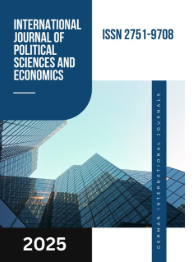THE LITERARY WORKS OF THE ABBASID PERIOD WRITERS WORKS OF REPRESENTATIVES OF THE LITERATURE OF THE ABBASID PERIOD
DOI:
https://doi.org/10.55640/Keywords:
Abbasid period, Arabic literature, Abu Nuwas, Al- Mutanabbi, Al-Jahiz, Al- Ma'arri, literary heritage, genres, literary style, literary development.Abstract
This article provides a detailed analysis of the literary atmosphere during the Abbasid period, highlighting the creative rise and the contributions of key literary figures of that era. The literary traditions formed between the 8th and 13th centuries, along with the works of writers and poets of that time, are characterized by high artistic quality and occupy an important place in the history of Arabic literature. The article examines the lives and literary legacies of prominent figures such as Abu Nuwas, Al- Mutanabbi, Al-Jahiz, and Al- Ma'arri, as well as their impact on the literary processes of their time. Additionally, it explores the thematic and genre diversity of the period's literature and innovations in literary language and style.
References
1. Khodjaeva R., Ziyovuddinova M., Khudjanova D. Medieval Arabic Literature. – Tashkent, 2018.
2. Ziyovuddinova M. Literature of the country whose language is being studied (Arabic literature - V-XII centuries). - Tashkent, 2021.
3. Arabic Literature. Monograph (Team of Authors). – Tashkent, 2016.
4. Mamiraliyev.K. “Modification of genres in Uzbek poetry of the independence period”. 2024.
5. Anthology of Uzbek classical poetry. Compiled by: H. Boltaboyev, D. Qazoqboyeva. – Tashkent, 2022.
6. Saidova N.M. Arabic classical literature. Uchebnoe posobie. - Tashkent, 2015.
7. Mukhtarov T. Mutalova G. Arabic literature is not paroge srednevekovya. - Tashkent, 2020
Downloads
Published
Issue
Section
License

This work is licensed under a Creative Commons Attribution 4.0 International License.
Authors retain the copyright of their manuscripts, and all Open Access articles are disseminated under the terms of the Creative Commons Attribution License 4.0 (CC-BY), which licenses unrestricted use, distribution, and reproduction in any medium, provided that the original work is appropriately cited. The use of general descriptive names, trade names, trademarks, and so forth in this publication, even if not specifically identified, does not imply that these names are not protected by the relevant laws and regulations.







